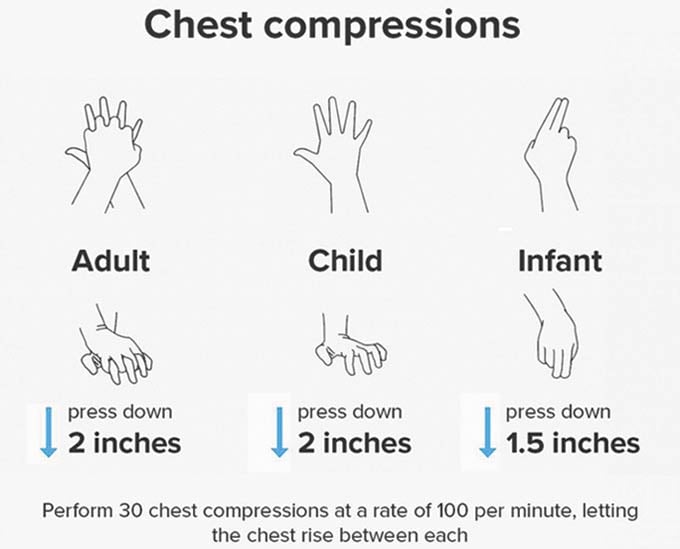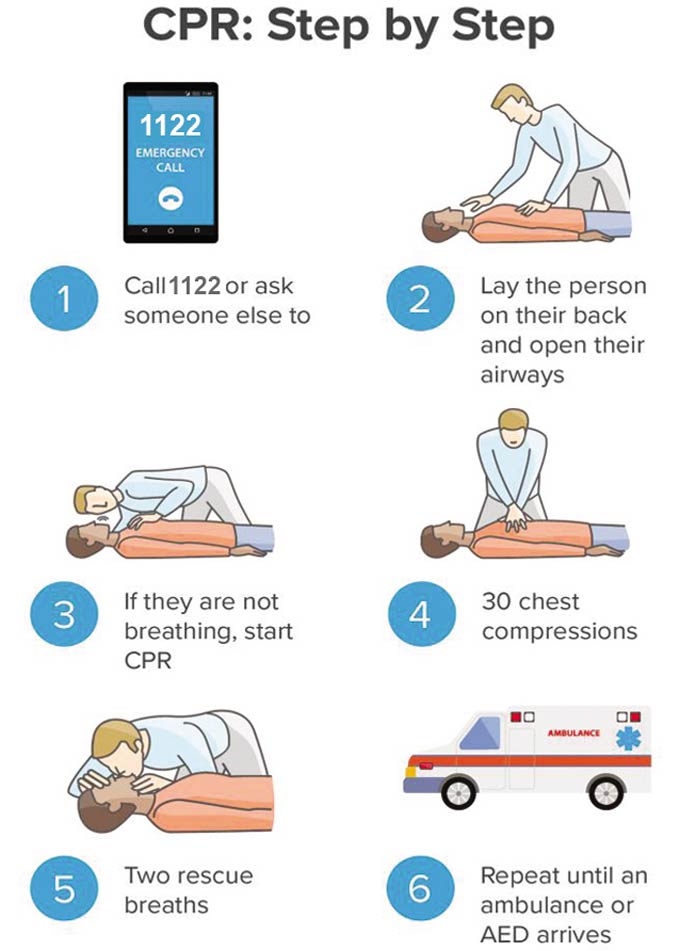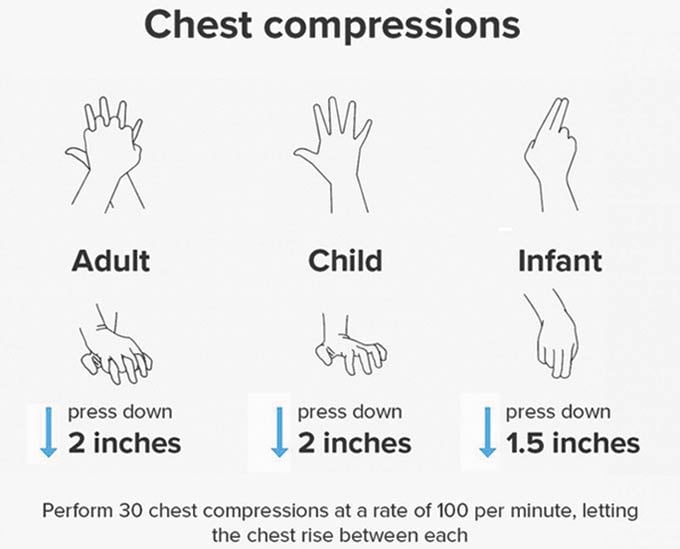Every year the last week of September is dedicated to life savers training. This year also on September 30, this day is being celebrated all over the world.
When a person has a sudden cardiac arrest or respiratory arrest, the first aid provided by medical personnel is called Basic Life Support (BLS). Its training is of great importance to health care workers as well as the general public.
According to the World Heart Federation, heart diseases are the leading cause of death worldwide. According to the World Health Organization (WHO), every year about 18 million people lose their lives due to these diseases.
Most of these deaths occur in low- and middle-income countries. Pakistan is also among the countries where the proportion of heart diseases is very high. According to an estimate, heart diseases are the second leading cause of death in Pakistan.
All too often we witness a sudden cardiac arrest or respiratory arrest. In such a situation, if a person present is trained in first aid, he can play an important role in saving the patient’s life by applying the technical skills.

In view of the current need for this first aid, in 2014 the British Islamic Medical Association (BIMA) started providing BLS training in mosques and Islamic centres. In the following years, Islamic Medical Associations of more than 12 countries also started providing BLS training.
The main target audience for these training programs are the general public and therefore mosques/Islamic centers have been selected to involve as many people as possible and train them in first aid. “Life Savers Day” is being celebrated in Pakistan since 2019 under the Pakistan Islamic Medical Association (PIMA) and BLS training was organized in 48 mosques last year.
Basic Life Support (BLS)
What is BLS? It is basically the name of a process in which medical personnel give first aid to patients in case of respiratory arrest or cardiac arrest. Basic life support training is very important to save the patient’s life in various emergency situations.
In case of cardiac arrest or respiratory arrest, if the patient is not given immediate and adequate attention, the patient can lose his life. In such a situation, not only the medical staff but also the common people of the society need to take training in ‘BLS’.
This training teaches medical personnel how to properly provide basic life support to a patient in critical medical emergencies.
If you’ve ever experienced a life-threatening emergency, in which a loved one had a heart attack or stopped breathing, you know how painful and frightening it can be. as is
In this emergency situation, if you can do anything to save the person’s life, it is important that you master the techniques that are necessary to save a person’s life in that situation.
When is BLS required?
‘BLS’ includes a variety of methods that are used on an as-needed basis. BLS is used for various emergencies like cardiac arrest, respiratory arrest, getting something stuck in the mouth.
In this, professionals apply CPR (cardiopulmonary resuscitation) or AED (automated external defibrillator) to the patient’s chest with pressure, or current, which provides sufficient support to the person’s life and Life is saved.
In order to provide this support in time, it is very important to learn this method i.e. BLS training so that the patient can be given first aid in the right way at the right time.
When someone is trained in BLS, they become confident enough to handle such sudden situations where ordinary people cannot approach the patient due to fear and they realize that they might be Approaching the patient may cause further harm or discomfort.
Thanks to this skill, we save the patient’s life. This is a procedure in which the patient’s chest is compressed in a specific way by a CPR or AED machine to start the heart and restore breathing to the body. Is. It is also breathed in through the mouth.
Benefits of first aid
This training has several main advantages. It not only benefits the patient who gets a new lease of life but also the person who acquires the skill becomes confident about it i.e. to save someone’s precious life, and this skill gives him confidence. Is. When accidents and medical emergencies occur, the general public does not know how to help the affected person due to lack of knowledge and information.
Sometimes there is also a fear that some of their actions may cause harm or pain to the affected patient. We often witness such incidents due to lack of skills and experience. Because of this, most of the victims lose their lives.

BLS training will provide us with the skills and experience, which can help save lives instead of being mere silent spectators in the event of accidents.
The fact is that having the skills and knowledge to save the life of someone in distress can be of great benefit to us in our practical life. Because a patient who has a heart attack does not get much time to save his life. The sooner a victim receives CPR and an AED, the more likely they are to survive.
CPR (Cardiopulmonary resuscitation):
This course develops the skills of CPR and AED (Automated Defibrillator) which is an important life saving technique not only in hospitals but also in streets, homes, offices and markets. When someone has a heart attack away from health centers in the community, it is a dangerous situation.
If CPR is not performed in the shortest possible time, the affected patient loses his life. In such a case, if one gives CPR to the victim, this process ensures a continuous supply of blood circulation. This process is done by applying pressure to the heart, which gives the heart an artificial beat. This pressure also facilitates blood flow to the rest of the body.
Research has shown that the blood in the human body contains enough oxygen to sustain life for a few minutes. Consequently, when only chest compressions are given, even without mouth-to-mouth ventilation, the victim may survive for some time before professional help arrives. Because a heart attack can affect perfectly healthy people, and it can happen without any prior symptoms.
Therefore, the life of a cardiac arrest patient depends on the presence of a person who is skilled in basic medical care methods.
Any bystander i.e. friends, relatives, passers-by should have this skill, who knows CPR and give first aid at that exact moment. When something like this happens to someone around us, we want to do everything we can to save their life, but no matter how much we want to help, it’s useless without CPR skills. Will be.
What is an AED?
This is an electrical device. When the heart beats irregularly or stops, medical staff use it to regulate the heartbeat or restore breathing by applying pressure to the patient’s chest to restore breathing. Training in ‘Basic Life Support’ is also beneficial for creating new job opportunities as various organizations provide job opportunities to the trainees. A
If you have achieved BLS certification, it means that you are trained and proficient in the essential basic techniques that help save someone’s life. More attention and priority will be given.
BLS training provides a sense of an environment, in which the people around or the people of an organization feel secure that there are people around them to help them in case of any emergency. They can provide first aid.
Oftentimes, patients affected by such a situation also fear that there are no people around them with the skills to provide them with medical assistance, and this feeling causes further harm to them. Therefore, this training also creates a sense of security in us and we can be helpful to others at any stage of life.
(Dr. Saeedullah Shah is serving as Consultant Cardiologist at Shifa International Hospital Islamabad. He is senior member of Pakistan Islamic Medical Association (PIMA).)
(function(d, s, id){
var js, fjs = d.getElementsByTagName(s)[0];
if (d.getElementById(id)) {return;}
js = d.createElement(s); js.id = id;
js.src = “//connect.facebook.net/en_US/sdk.js#xfbml=1&version=v2.3&appId=770767426360150”;
fjs.parentNode.insertBefore(js, fjs);
}(document, ‘script’, ‘facebook-jssdk’));
(function(d, s, id) {
var js, fjs = d.getElementsByTagName(s)[0];
if (d.getElementById(id)) return;
js = d.createElement(s); js.id = id;
js.src = “//connect.facebook.net/en_GB/sdk.js#xfbml=1&version=v2.7”;
fjs.parentNode.insertBefore(js, fjs);
}(document, ‘script’, ‘facebook-jssdk’));



